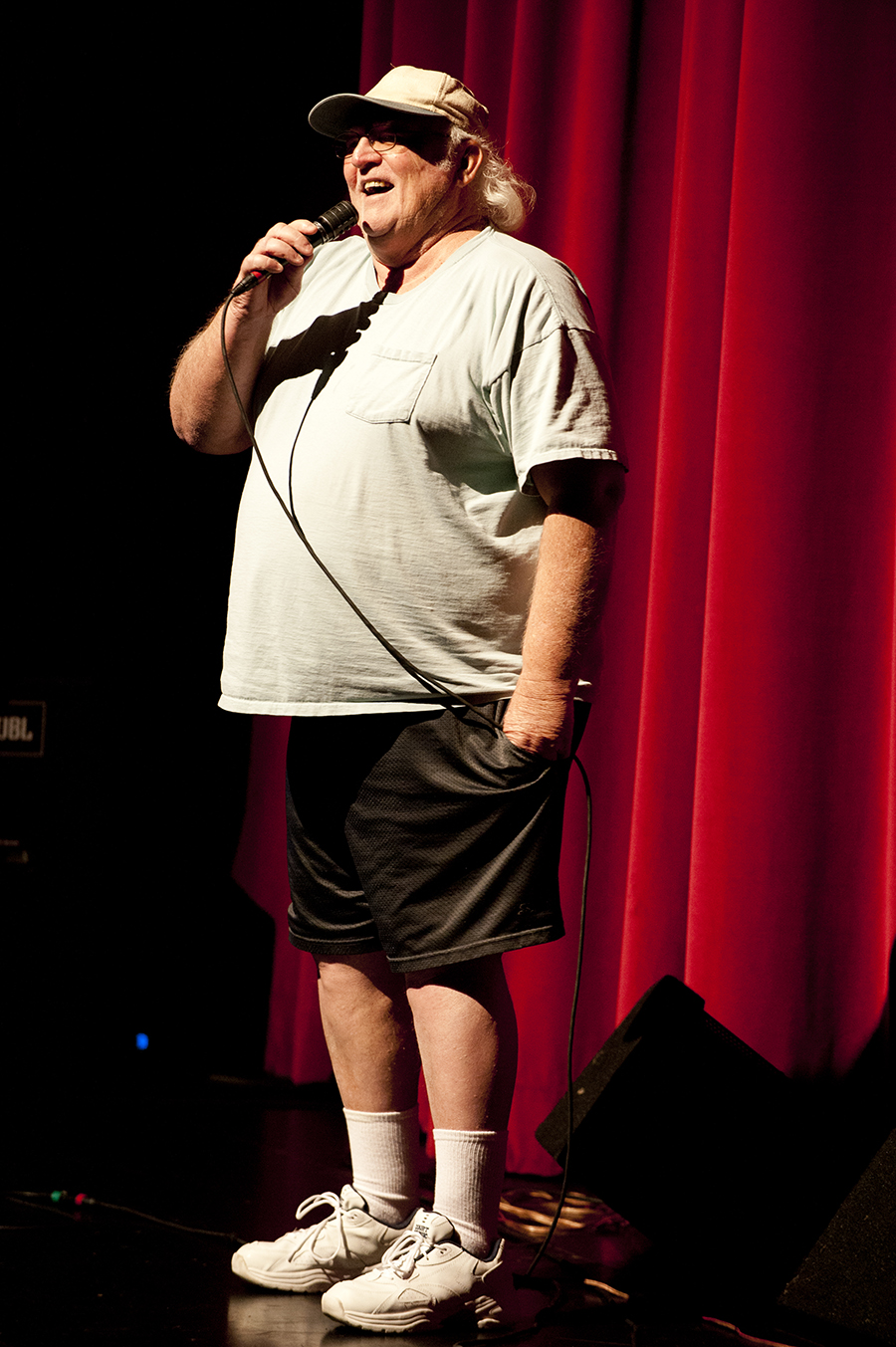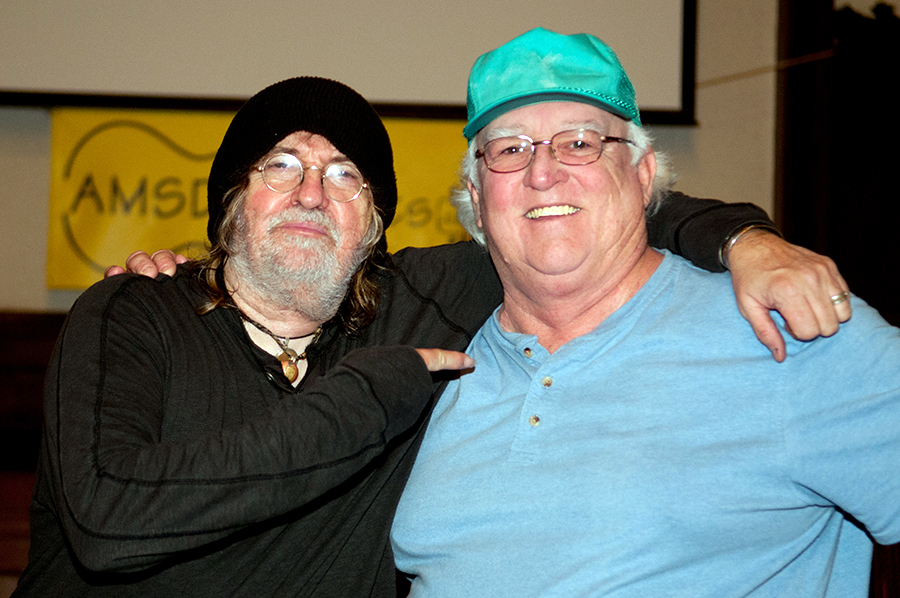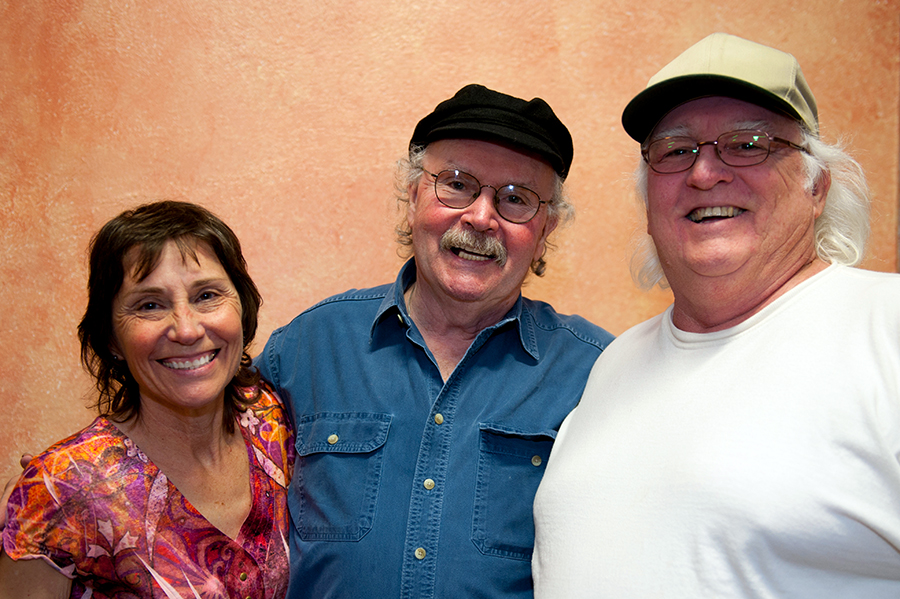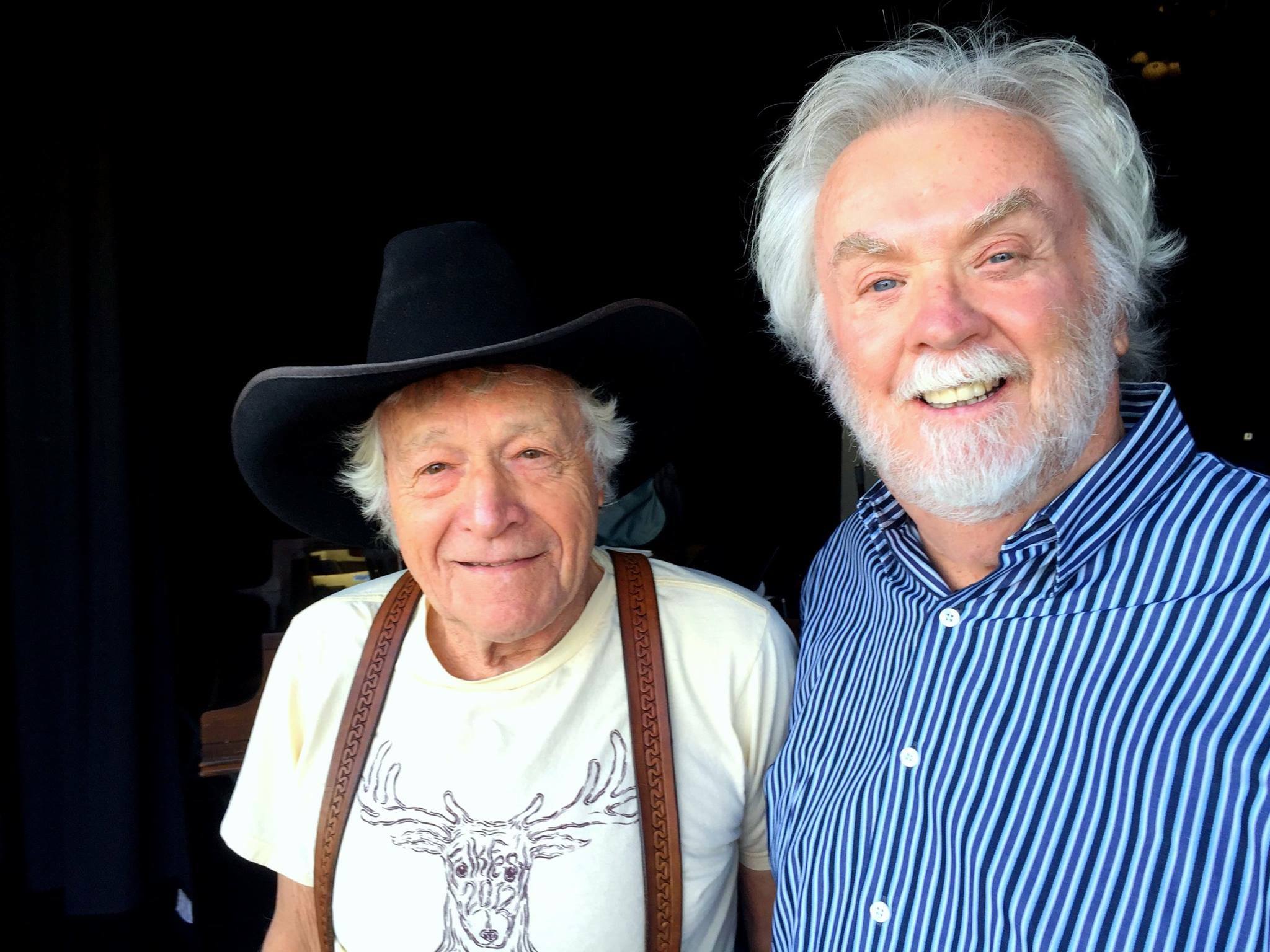Featured Stories
Carey Driscoll: A Passionate Advocate for Overlooked Music

Carey Driscoll. Photo by Steve Covault.
Talking about Carey Driscoll, the late founder and booking agent for Acoustic Music San Diego, invariably comes back to two observations: his passion for the music and his unorthodox approach to email marketing.
Friends, AMSD volunteers, even musicians recollected—often with warm laughter—memories of a man who poured his entire self into a concert series that booked musicians who otherwise might not have played in San Diego at all.
But that self could be, well, a bit rough hewn. The less charitable might have termed his approach abrasive, particularly when ticket sales were not commensurate with what he thought a particular artist deserved.
___________________________
I hate to send ANOTHER email so soon after the last one—but with our next two concerts having sold FAR fewer tickets than they should have, based on the high quality of the performers, I hope sharing comments from an email I just received from one of our most frequent concert goers might cause more of you to reconsider and buy tickets to one or both of those concerts.
MARY GAUTHIER is an IMPORTANT ARTIST (“Her razor-sharp eye for detail and her commitment to unsentimental self-reflection puts her in a class with greats such as Kris Kristofferson, John Prine, and, yes, Bob Dylan.”—Los Angeles Times)—for whom there should be no empty seats in any venue, regardless of whether the capacity is 250 or 25,000. She’s just that good.
___________________________
As alt-country singer Tom Russell, a favorite of Driscoll who played a half-dozen or more AMSD dates over the years, put it from the AMSD stage toward the end of a show on December 3, 2009, “Man, some of those emails he sends are ROUGH! But you gotta be able to take it if you’re a friend. You gotta be drinking to read those emails!”
Have a listen!
George Varga, longtime music critic at the San Diego Union-Tribune who interviewed dozens of musicians that played at AMSD over the years, recalled that “Carey could be brusque and overbearing. He could, and did, sometimes berate AMSD audiences for not turning up in sufficient numbers for concerts by artists he so fervently believed should be playing to packed houses. But that was also part of his charm.”

Carey & Ray Wylie Hubbard. PHoto by Steve Covault.
And local singer-songwriter Michael Tiernan, who not only performed a show in the AMSD series but also volunteered at numerous other shows, said of Driscoll’s occasionally crusty email campaigns, “It showed his passion for it. He believed in this music like it could save your soul, and he couldn’t believe anyone else wouldn’t fall down and worship. He was super salty about it, and he would chastise the people he was counting on! I think people did realize that despite his tactics he was right! He did bring the best people.”
It was that passion for the music that was the flipside of the emails, which led to the loyalty to Driscoll, displayed by both AMSD attendees and volunteers.
Deb Mills, another longtime AMSD volunteer who also ran the AMSD Facebook page, said, “I’ve probably never known anyone who had that kind of dedication to the music and just wanted to bring it to the people.”
Fellow volunteer Patrick Carney, who also sold his portraits of musicians at many AMSD shows, said that Driscoll wasn’t intentionally rough in his emails. “What he was trying to do—and he didn’t know how to do this—was breathe the magic of a Eliza Gilkyson or Cris Williamson. Everybody knew who Al Kooper was, but they wouldn’t necessarily know Guy Davis or the slack-key musicians from Hawaii.”
And Ann Costello, his longtime girlfriend and partner in running AMSD, observed, “What stressed him out was not having enough people come to concerts by performers whom he felt deserved more attendance. And he didn’t give up on performers. If they didn’t have a good attendance, he’d try again the next year. He’d send out emails, and they’d have sound bites, and he’d list the songs they’d written, and he’d try to educate the people on his mailing list about these performers.”
****************
Driscoll died on May 15 at age 72 of non-alcohol-related liver disease. He was born in Rhode Island, but mostly grew up in San Diego when the Navy brought his dad to town.
It was at the now-shuttered Marian Catholic High School in Imperial Beach that he met Costello, who would be both his high school sweetheart and, later in life, his girlfriend and partner in running AMSD.

Ann Costello, folksinger Tom Paxton, and Carey. Photo by Steve Covault.
“We dated for about a year, and then went our separate ways,” Costello recalled of their teenage years. “His nephew and my son were on the same Little League team, and that was the first time I’d seen him in about 20 years. I was married, raising my kids; he was busy dating other people. Time just kind of went on. He got involved with the concerts and as time went on, I helped out with the concerts a little bit—and then my husband passed away. And we spent the next 11 or 12 years together until he passed away.
“Carey went to concerts all the time, going back to the time we dated in high school. He just loved concerts. He’d stand in line to get the best seats, and he often did. He knew when the concerts were coming… he kind of had his finger on the pulse of those concerts. And that never stopped—he went to concerts for decades.
“He discovered that a lot of peole he really enjoyed weren’t coming to San Diego. He would call Kenny Weissberg [booker for Humphrey’s Concerts by the Bay] and say, ‘Why don’t you have Jerry Jeff Walker?’ And Kenny did, he had Jerry Jeff Walker in concert at Humphrey’s. But he didn’t sell enough tickets to make it worth his while. The following year, Carey called back and said it’s time to have Jerry Jeff Walker back, and Kenny said, ‘I can’t! Why don’t YOU have him back?’
“Carey decided to give it a try. I think it was in 2003. Jack Williams was the first act, which actually took place in El Cajon, at a music store. Then he started having concerts in the Normal Heights Community Center, then the Methodist Church in Normal Heights.
“Before he started hosting concerts, he was very involved in music. He stopped working when he was about 45, and he was in local bands like the Back Street Blues. He started out on drums in high school, and then he switched over to guitar and he played some bass. He had several bands of his own. Rock bands. They would play places like Campland by the Bay. They weren’t hugely successful; it was just something he enjoyed doing.
“And then he started presenting concerts—and it kind of worked for him. He had this level of comfort in talking with performers. He wasn’t intimidated, but he was respectful. He had a tremendous knowledge of music—who played what instruments on what album.”
Mills, the AMSD volunteer who ran the series’ Facebook page, met Driscoll at an AMSD show.
“I don’t exactly remember when it was, but I think one of my favorite bands was going to be there, and I tried to find his online presence. And there really wasn’t one other than his website, and we know what his website was like. So, I started talking to him, and I said, ‘What about being on Facebook?’ And he didn’t really like the idea. But I said, ‘Let’s give it a try.’
“The thing about Carey is that he was about the music 100 percent. I thought he could have a bigger presence in San Diego and be a little more out there if maybe he had this Facebook page.
“He had his core people—we followed him almost down to the border, and it was usually the same people. There was a hard core of AMSD followers, and it was Carey who did that. He presented quality acts, and people appreciated it.
“AMSD was always tenuous—always. He never made money; he was just trying to cover his costs. And whenever there was a problem with the venue, he had to start all over.”

Patrick Carney was frequently at AMSD Concerts, selling his art in the lobby. Here he is with Ramblin’ Jack Elliot.
Carney recalled, “I did 590 shows with Carey. He was a blessing to San Diego—because those musicians were not being invited to San Diego. They were no longer in their commercial prime, and Humphreys couldn’t bring them in, or the Belly Up wasn’t bringing them in. Carey filled a real nice niche for those musicians.
“The Chris Hillmans and Steve Forberts who came in were phenomenal. They were still releasing new music, and our patrons were really good about buying the CDs from the artists. A lot of them had books they had just released, and our patrons were good about buying the books.”
The 10th AMSD show was the only time Driscoll booked a strictly local act—Michael Tiernan, who was also an AMSD volunteer. While Driscoll would proudly bring back San Diego natives who’d established a national reputation, Tiernan was the first—and last—undiscovered act at AMSD .
Tiernan said he “weaseled” his way into the gig by making himself helpful first.
“I asked Carey if I could help—set up sound—and then floated the idea to him. He was resistant, but I promised I’m going to promote the heck out of it. Up to then, I’d only been playing little coffee shops and street corners.
“I think he finally agreed because I’d shown good faith and helped him out a bit. I think we sold 80 or 90 tickets, and he was super stoked. This was 2004. It was kind of my coming out party in San Diego. It was a challenge for me. I got to activate what little crowd I had. For me at that time, it was like a little mountain to climb.”
***************
Driscoll announced several times that he was giving up the AMSD series, but every time at the last minute he ended up re-starting it. The pandemic-related shutdown, though, imposed its own reality. Although Carney said that before Driscoll’s health turned for the worse, they were still discussing restarting the series, bandying names back and forth, as recently as December.
For all his success in bringing “name” acts like Al Kooper, John Sebastian, and Judy Collins to town, there were, of course, some artists that Driscoll never quite succeeded in booking.
Carney said Driscoll had unsuccessfully tried to book John Prine, Leon Redbone, and John Mellencamp over the years.
Costello also said that Driscoll regretted never getting to book Tom Waits, whom he’d met while both were in high school in the South Bay.
But the list of artists who DID play at AMSD over the course of its run, from 2003 to 2017, more than 630 shows in all, dwarfs the ones he didn’t get. (Full list with dates at https://web.archive.org/web/20181220233530/http://amsdconcerts.com/PreviousConcertsDates.html)
Varga, the San Diego music journalist, noted, “Carey Driscoll was a quintessential grassroots concert promoter who poured his heart, soul, time and—quite often—money into the music he championed. He almost single-handedly created a series, Acoustic Music San Diego—later renamed AMSDconcerts—that endured for nearly 20 years and greatly enhanced the cultural fabric of this city.
“Carey’s tenacity in doing so was tireless and almost badger-like. If he loved an unsung solo artist or band, he was unwilling to accept that other people didn’t love them just as much as he did. And he was convinced that their music could and would win people over—just as it did him. So, he brought these artists to San Diego, in some cases multiple times, and slowly but surely he built an audience for them. Would Geoff Muldaur or Ellis Paul have been booked by any other promoter to perform here again and again? Would anyone else have brought Mary Gauthier to San Diego? Or the Celtic music greats Martin and Eliza Carthy, who were long acclaimed in the U.K. but almost completely unknown here?
“I greatly enjoyed many of the AMSD concerts I attended and regret not having gone to more because the void Carey leaves behind here is not one I can imagine anyone else filling.”
Tiernan, the performer and volunteer, ended his remembrance of Driscoll by saying, “He really believed in this music, and that’s what I respected about him.”
And Tom Russell, who played as many shows at AMSD over the years as anyone, replied to a request for comment by writing, “My memories of Carey are all very positive. He had good taste and a strong notion of how the show should sound and be presented. We had our ups and downs as far as that went, but I realized he was a pro with a big heart.
“He’s a monument to folk music in Southern California.”






